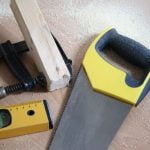Are you wondering how to borrow for home improvement? Whether it’s a long overdue renovation project or essential repairs, finding the right financing is crucial. Understanding the various options available can make all the difference in ensuring your home improvement project is a success. In this article, we will guide you through the process of borrowing for home improvement and help you make informed decisions about financing your project.
Before diving into the world of loans and lines of credit, it’s important to assess the scope of your home improvement needs. Identifying the specific areas that require attention will provide clarity on the necessary funding for your project. Once you have a clear understanding of your needs, exploring financing options becomes easier. From traditional loans to government assistance programs, there are various borrowing solutions available to homeowners.
By understanding the pros and cons of borrowing for home improvement, you can make informed decisions about which financing option best fits your needs. It’s also important to familiarize yourself with the requirements and eligibility criteria for home improvement loans to increase your chances of securing the necessary funds. Additionally, comparing interest rates, terms, and repayment options from different lenders is essential in choosing the right financing solution for your project.
Assessing Your Home Improvement Needs
Before diving into the world of home improvement financing, it’s crucial to thoroughly assess your home improvement needs. This involves identifying the scope of your project, including all the areas that require attention and improvement. Whether you’re looking to renovate your kitchen, add a new bedroom, or upgrade your home’s energy efficiency, having a clear understanding of your project’s scope will help you determine the necessary budget and financing options.
Assessment should also involve evaluating the urgency and priority of each aspect of your home improvement project. For instance, if you need a new roof due to leaks, this would likely take precedence over cosmetic upgrades like repainting walls. Additionally, consider any long-term goals you have for your property and how they align with your current home improvement needs.
This assessment process might also involve consulting with professionals such as contractors, architects, or interior designers who can provide valuable insight into what is feasible given your budget and timeline constraints. By gaining a comprehensive understanding of the specific areas that need improvement in your home, you’ll be better equipped to make informed decisions about how to finance these projects.
| Aspect | Description |
|---|---|
| Urgency | Evaluating which improvements are most pressing |
| Long-term goals | Considering how current projects align with future plans for the property |
| Professional input | Seeking advice from experts in construction or design fields |
Exploring Financing Options
Once you have assessed the scope of your home improvement project, the next step is to explore financing options that will best suit your needs. There are various borrowing solutions available for homeowners, including loans, lines of credit, and other financial products. It’s important to understand the differences between these options and carefully consider which one will work best for you.
When exploring financing options for your home improvement project, consider the following:
- Personal Loans: These are unsecured loans that can be used for a variety of purposes, including home improvements. They typically have fixed interest rates and set repayment terms.
- Home Equity Loans: If you have built up equity in your home, you may be able to borrow against it with a home equity loan. This option often provides lower interest rates than personal loans.
- Home Equity Lines of Credit (HELOC): Similar to a home equity loan, a HELOC allows you to borrow against the equity in your home. However, with a HELOC, you have access to a revolving line of credit that can be drawn on as needed.
- Cash-Out Refinance: This option involves refinancing your mortgage for more than you currently owe and taking the difference in cash. The extra funds can then be used for home improvements.
It’s important to carefully consider each of these financing options and weigh their pros and cons before making a decision. Depending on your financial situation and the scope of your project, one option may be more advantageous than another. Be sure to compare factors such as interest rates, repayment terms, and any associated fees when evaluating different borrowing solutions.
Understanding the Pros and Cons of Borrowing for Home Improvement
When considering taking out a loan or line of credit for home improvement, it’s important to understand the potential advantages and drawbacks. One of the main benefits of borrowing for home improvement is the ability to fund large projects that might otherwise be unaffordable.
This can help homeowners make necessary repairs or upgrades to their homes, increasing their value and improving their quality of life. Additionally, certain home improvement loans may offer tax benefits, such as the ability to deduct interest on your taxes.
On the other hand, borrowing for home improvement comes with its own set of risks. Taking on additional debt means shouldering the responsibility of making regular payments, which can strain your finances if not carefully managed. Furthermore, if you fail to repay your loan on time, you could end up damaging your credit score and risking foreclosure on your home. It’s critical to carefully consider whether the benefits outweigh the potential drawbacks before deciding to borrow for home improvement.
Ultimately, weighing the pros and cons of borrowing for home improvement is essential in making an informed decision about financing your project. Homeowners must carefully evaluate their financial situation and determine whether they can afford additional debt while accounting for potential future expenses. By thoroughly understanding the implications of borrowing for home improvement, individuals can make sound decisions that align with their long-term financial goals.
Qualifying for Home Improvement Loans
Assessing Your Credit Score
Before applying for a home improvement loan, it is crucial to assess your credit score. Lenders use credit scores to determine the risk of lending money to you. A good credit score increases your chances of qualifying for a loan with favorable terms and lower interest rates. On the other hand, a lower credit score may limit your borrowing options or result in higher interest rates.
Evaluating Your Debt-to-Income Ratio
Lenders also evaluate your debt-to-income ratio (DTI) when determining your eligibility for a home improvement loan. This ratio compares your monthly debt payments to your gross monthly income. A lower DTI demonstrates that you have manageable levels of debt compared to your earnings, making you a more attractive candidate for borrowing.
Providing Proof of Income and Employment
In addition to credit scores and DTI ratios, lenders typically require borrowers to provide proof of income and employment. This documentation may include pay stubs, tax returns, or bank statements. The purpose of this requirement is to ensure that you have a stable source of income to support the repayment of the loan. Additionally, self-employed individuals may need to provide additional documentation, such as profit and loss statements or business tax returns, to verify their financial stability.
Exploring Government Assistance Programs for Home Improvement
Types of Government Assistance Programs
There are various government assistance programs available to homeowners who need financial help for home improvement projects. One common type of assistance is in the form of grants, which do not require repayment.
These grants are typically provided by local or state government agencies and are often targeted towards low-income households or specific renovation projects, such as energy efficiency improvements. Another type of government assistance comes in the form of subsidies, which provide homeowners with funds that may need to be repaid but at a lower interest rate or with more flexible terms compared to traditional loans.
Eligibility and Application Process
Eligibility criteria for government assistance programs can vary widely depending on the specific program and funding source. Some programs may prioritize certain types of home improvement projects, such as those related to making homes more accessible for individuals with disabilities or addressing health and safety concerns. Income requirements may also be a factor in determining eligibility for certain programs.
The application process for government grants and subsidies typically involves submitting detailed information about the proposed home improvement project, household income, and other relevant documentation. It’s important for homeowners to carefully review the eligibility requirements and application procedures for each program they are considering.
Benefits and Considerations
Government assistance programs can offer significant benefits to homeowners undertaking home improvement projects. For those who qualify, grants and subsidies can provide valuable financial support that reduces the overall cost of renovations. Additionally, these programs may offer access to specialized resources or technical assistance that can help ensure that home improvement projects are completed safely and effectively.
However, it’s important for homeowners to carefully consider the potential drawbacks of participating in government assistance programs, such as limitations on the types of improvements covered, strict compliance requirements, or potential delays in receiving funding. Before pursuing these options, it’s crucial for homeowners to weigh the benefits against any potential challenges associated with accessing government assistance for their home improvement needs.
Choosing the Right Lender
One of the most crucial steps in borrowing for home improvement is choosing the right lender. When considering loan options, it’s important to compare interest rates, terms, and repayment options to ensure that you are getting the best deal possible. Interest rates can vary significantly between lenders, so taking the time to shop around and compare rates can save you money in the long run.
In addition to interest rates, it’s essential to consider the terms of the loan. This includes the length of the loan, any fees associated with the loan, and whether there are any prepayment penalties. Not all lenders offer the same terms, so it’s important to carefully review these details before making a decision.
Finally, when comparing lenders for home improvement loans, it’s crucial to consider repayment options. Some lenders may offer more flexibility in how you can repay the loan, such as allowing for bi-weekly or monthly payments. Others may have stricter repayment plans. Understanding your financial situation and which repayment option works best for you is essential when selecting a lender.
| Aspect | Consideration |
|---|---|
| Interest Rates | Vary significantly between lenders |
| Terms | Length of loan, fees, prepayment penalties |
| Repayment Options | Flexibility in payment frequency |
Applying for a Home Improvement Loan
Once you have assessed your home improvement needs and explored the different financing options available, the next step is to apply for a home improvement loan. The application process may vary depending on the lender and the type of loan you are applying for, but there are some general steps that most borrowers will need to follow.
The first step is to gather all the necessary documentation required for the application. This may include proof of income, tax returns, employment information, credit history, and details about the home improvement project. It’s important to have all these documents organized and ready before starting the application process to avoid any delays.
Once you have gathered all the necessary documentation, you can start the application process with your chosen lender. This may involve filling out an online application form or meeting with a loan officer in person. Be prepared to provide detailed information about your financial situation, employment status, and the scope of your home improvement project.
After submitting your application, the lender will review your information and determine whether you qualify for the loan. They may also request additional documentation or information during this process. If approved, you will receive a loan offer outlining the terms and conditions of the loan.
It’s important to carefully review this offer and make sure you understand all aspects of the loan before accepting it. If approved and accepted, you can then begin planning for your home improvement project knowing that you have secured financing for it.
Managing Home Improvement Loan Payments
One of the most important aspects of borrowing for home improvement is managing the loan payments effectively. Without proper budgeting and financial planning, homeowners may struggle to meet their repayment obligations, leading to financial stress and potential defaults on the loan. Therefore, it is crucial for homeowners to understand how to manage their home improvement loan payments and ensure that they can comfortably afford the monthly installments.
First and foremost, homeowners should create a detailed budget that outlines all of their monthly expenses and income. This will allow them to accurately assess how much money they can allocate towards their home improvement loan payments without compromising their other financial responsibilities. By having a clear understanding of their cash flow, homeowners can make informed decisions about the size and terms of the home improvement loan they can responsibly afford.
In addition to budgeting, financial planning for loan repayment involves setting realistic goals and timelines for paying off the debt. Homeowners should consider factors such as their long-term financial objectives, interest rates, and potential changes in income when determining a repayment strategy.
It may be beneficial to explore options for accelerating loan repayment if feasible, such as making extra payments or refinancing the loan at a lower interest rate. Ultimately, effective management of home improvement loan payments requires proactive planning and regular assessment of one’s financial situation to ensure that repayment remains sustainable over time.
Conclusion
In conclusion, it is essential for homeowners to carefully consider their options when it comes to borrowing for home improvement. By understanding the scope of their project and assessing their financing needs, homeowners can make informed decisions about the type of loan or borrowing solution that best suits their situation. It is important to weigh the pros and cons of borrowing for home improvement and to explore all available options, including government assistance programs, grants, and subsidies.
Furthermore, choosing the right lender is crucial in order to ensure favorable interest rates, terms, and repayment options. Comparing different lenders and understanding their eligibility criteria can help homeowners secure the most suitable financing for their home improvement project. Additionally, a thorough understanding of the application process and managing loan payments through budgeting and financial planning are key aspects of successfully navigating the borrowing process.
Ultimately, empowering homeowners with knowledge about home improvement financing allows them to take control of their projects and make confident decisions that align with their financial goals. By utilizing the tools and resources available, homeowners can embark on their home improvement journey with a clear understanding of the borrowing process and work towards creating a space that meets both their practical needs and aesthetic desires.
Frequently Asked Questions
Can You Borrow More for Home Improvements?
Yes, it is possible to borrow more for home improvements through various methods such as taking out a home equity loan, applying for a cash-out refinance, or securing a personal loan. These options allow homeowners to access additional funds based on the value of their home and their creditworthiness.
Is a Heloc a Good Idea for Home Improvement?
A Home Equity Line of Credit (HELOC) can be a good idea for home improvement projects if used responsibly. With a HELOC, homeowners can access funds as needed and only pay interest on the amount borrowed.
However, it’s important to carefully consider the financial implications and to have a clear plan for repayment to avoid potential risks such as foreclosure.
Can I Borrow Against My 401k for Home Improvements?
It is possible to borrow against your 401k for home improvements through a 401k loan. This option allows you to access up to 50% of your vested account balance or $50,000, whichever is less, for various purposes including home renovations.
However, it’s important to carefully consider the long-term impact on your retirement savings and ensure that you are able to repay the loan within the specified timeframe.

I’m thrilled to have you here as a part of the Remodeling Top community. This is where my journey as an architect and remodeling enthusiast intersects with your passion for transforming houses into dream homes.





